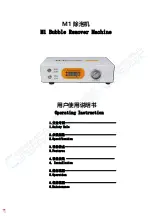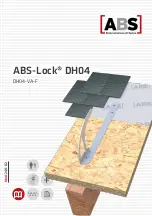
20
en
3.12
Inspection
►
Allow the product to cool down to room temperature.
►
Dry the product if it is wet or damp.
3.12.1 Visual inspection
►
Ensure that all soiling has been removed. In particular, pay attention to
mating surfaces, hinges, shafts, recessed areas, drill grooves and the
sides of the teeth on rasps.
►
If the product is dirty: repeat the cleaning and disinfection process.
►
Check the product for damage, e.g. insulation or corroded, loose, bent,
broken, cracked, worn or severely scratched and fractured components.
►
Check the product for missing or faded labels.
►
Check the products with long, slim shapes (in particular rotating instru-
ments) for deformities.
►
Check the product for damage to the spiral element.
►
Check the cutting edges for continuity, sharpness, nicks and other
damage.
►
Check the surfaces for rough spots.
►
Check the product for burrs that could damage tissue or surgical gloves.
►
Check the product for loose or missing parts.
►
Immediately put aside damaged or inoperative products and send them
to Aesculap Technical Service, see Technical service.
3.12.2 Functional test
CAUTION
Damage (metal cold welding / friction corrosion) to the product caused
by insufficient lubrication!
►
Prior to function checks, lubricate moving parts (e.g. joints, pusher
components and threaded rods) with maintenance oil suitable for
the respective sterilization process (e.g. for steam sterilization:
STERILIT® I oil spray JG600 or STERILIT® I drip lubricator JG598).
►
Assemble disassembled products, see Assembly.
►
Check that the product functions correctly.
►
Check that all moving parts are working properly (e.g. hinges,
locks/latches, sliding parts etc.).
►
Check rotating products (e.g. reusable drills and cutters) for bends and
deformities. To do this, roll the product on an even surface.
►
Check for compatibility with associated products.
►
Immediately put aside inoperative products and send them to Aesculap
Technical Service, see Technical service.
3.13
Assembly
3.13.1 S
4
C navigated tapper
Ø
3.5 mm, FW655R
►
Push guide sleeve
17
onto the S
4
C tapper
A
in the direction of the
arrow and turn nut
19
clockwise to tighten.
Note
Spring
18
is fixed on shaft.
Fig. 19 Mounting the S
4
C tapper (Tap)
3.13.2 S
4
C navigated screwdriver FW656R
CAUTION
The S
4
C screwdriver will not function properly if the retaining tongues
are bent or kinked!
►
Do not bend or crimp the retaining tongues.
►
Push green holding sleeve
22
with retaining tongues
21
onto the
screwdriver shaft so that the retaining tongues engage in the
grooves
23
of the screwdriver shaft.
►
Retract and hold green holding sleeve
22
against the spring pressure.
►
Screw the screw sleeve 20 onto the working end of the
S
4
C screwdriver
D
and tighten.
►
Release the green holding sleeve
22
.
Fig. 20 Mounting the S4C screwdriver
3.13.3 S
4
C navigated drill sleeve
Ø
3.5 mm (FW664R)/
Ø
4.0 mm
(FW665R)
►
Screw on guide sleeve
24
counterclockwise. Be aware that it is a left-
handed thread. You will hear and feel the guide sleeve clicking into
position every half turn.
►
Push knob
25
into the handle of the instrument, screw in clockwise and
tighten.
Fig. 21 Mounting the S
4
C drill guide
3.13.4 S
4
C navigated guide sleeve for smooth-shaft screws, FW658R
►
Insert inner sleeve
26
into the outer sleeve in the direction of the arrow
in the "remove" position.
►
Then turn to "closed" position.
►
Push knob
25
into the handle of the instrument, screw in clockwise and
tighten.
Fig. 22 Mounting the guide sleeve for smoothshank screws
19
18
17
A
20
21
22
23
D
25
24
F/G
25
26
I
Содержание Aesculap S4 Cervical
Страница 2: ...A B C D E F H K J G I ...
Страница 3: ...L M N O P Q R S ...
















































